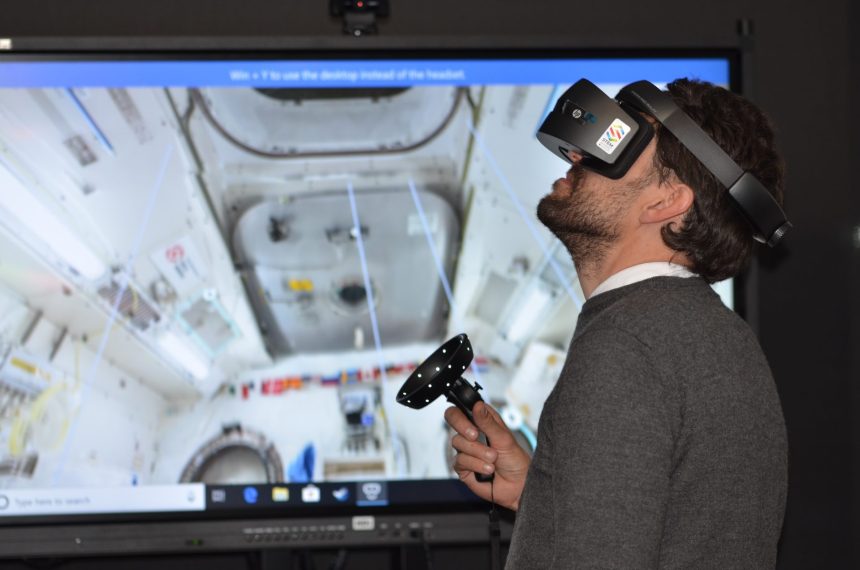In June, Apple CEO Tim Cook unveiled the Vision Pro mixed reality headset, a product that he believes holds the key to the future of computing. However, with a price tag of $3,499 and facing a market that has yet to fully embrace extended reality (XR), Cook’s vision comes with significant risks. The Vision Pro is not only Apple’s riskiest product launch in years but also Cook’s first major hardware product in seven years. With limited apps and experiences, as well as design complexities and high costs, the success of the Vision Pro remains uncertain. In this article, we will explore the challenges and potential of Apple’s Vision Pro mixed reality headset, and examine the risks that Cook is taking to redefine his legacy.
The Vision Pro: A Blend of Virtual and Augmented Reality
The Vision Pro is Apple’s ambitious attempt to blend virtual reality (VR) and augmented reality (AR) into a single device. Unlike VR, which immerses users in a completely virtual environment, AR overlays virtual images on live video of the real world. Cook has long championed the potential of AR to transform communication and collaboration. Now, with the Vision Pro, he aims to prove that this technology is indeed the future of computing.
However, the Vision Pro is not without its challenges. It is a bulky and expensive device, priced at $3,499. Users will need to wear this clunky computer on their face, which may not appeal to everyone. Additionally, the XR market, which includes AR, VR, and mixed reality, has yet to gain mainstream consumer adoption. The Vision Pro will have limited apps and experiences at launch and will require users to be tethered to a battery pack. Despite these obstacles, Cook and Apple are betting that customers will eventually embrace virtual headsets for various activities.
The Potential of Virtual Headsets
Apple and other companies believe that virtual headsets have the potential to revolutionize the way we live and work. Jeremy Bailenson, the founding director of Stanford University’s Virtual Human Interaction Lab, suggests that virtual headsets should be used for experiences that are dangerous, impossible, counterproductive, or expensive in the real world. For example, virtual headsets can be invaluable for training firefighters, rehabilitating stroke victims, or simulating difficult workplace conversations.
The Vision Pro could also have a significant impact on entertainment. Apple’s close relationships with Hollywood and the entertainment industry could lead to exclusive experiences and content for the headset. With Disney+ already confirmed to be available on the Vision Pro at launch, it is clear that Apple is actively working with entertainment companies to create immersive experiences for users. NBA Commissioner Adam Silver has also expressed interest in collaborating with Apple to enhance the viewing experience for basketball fans using the Vision Pro.
Apple’s Legacy and Tim Cook’s Risk
If the Vision Pro succeeds, it could become the defining product of Tim Cook’s tenure as CEO of Apple. Cook, known for his operational expertise, aims to launch a breakthrough hardware product that will leave a lasting impact. While Cook has led Apple to extraordinary success, with a market cap of $3 trillion and a strong iPhone business, he now faces the challenge of finding a product that can replace the iPhone’s dominance.
However, skeptics question whether the Vision Pro is the right product to achieve this goal. The device enters an uncertain market, and its success hinges on widespread adoption. Previous headsets from other companies have seen limited uptake, with the most successful shipping only around 20 million units. In comparison, Apple’s iPad line averages between 10 million and 15 million shipments each quarter. The Vision Pro’s success depends on whether it can define the mixed reality headset market and change the way people interact with technology.
Apple’s Approach to Innovation
Apple has adopted a “not first but best” approach to product development in recent years. Instead of rushing products to market, the company takes its time to develop innovative and user-friendly devices. In 2017, Apple laid the foundation for the Vision Pro by launching ARKit, a framework that allows developers to incorporate augmented reality into their apps. By providing developers with the tools they need, Apple aims to ensure that the Vision Pro has a robust ecosystem of apps and experiences from day one.
The Vision Pro also benefits from Apple’s extensive network of developers who have been working on augmented reality applications for years. This strong developer community gives the Vision Pro an advantage over previous Apple products like the iPod and iPhone, which did not have an iTunes Store or App Store at launch. With hundreds of thousands of developers ready to create content for the Vision Pro, Apple hopes to entice early adopters and demonstrate the device’s full potential.
The Uncertain Market for Mixed Reality Headsets
While Apple has been working on the Vision Pro behind closed doors, the market for mixed reality headsets remains unproven. Other companies’ headsets have faced limited uptake, with only a fraction of the sales achieved by Apple’s flagship products. However, industry experts believe that the Vision Pro has the potential to define the mixed reality headset market. Eric Abbruzzese, a director at ABI Research, compares the Vision Pro’s potential impact to the launch of the iPhone, which initially faced competition but ultimately changed the smartphone industry.
The success of the Vision Pro will depend on convincing developers, early adopters, and enterprise customers to invest in the device. If Apple can establish the Vision Pro as the standard for mixed reality headsets, it will be seen as a game-changer in the industry. However, if the device falls short of expectations, Apple can still spin it as an innovative idea that the market was not yet ready for. With a strong portfolio of successful products, Apple has the resilience to weather any short-term disappointments.
See first source: CNN
FAQ
1. What is Apple’s Vision Pro mixed reality headset, and what is its significance?
- Apple’s Vision Pro is a mixed reality headset that combines virtual reality (VR) and augmented reality (AR) technologies. It’s significant because Apple aims to redefine computing and user interaction with this ambitious device.
2. What challenges does the Vision Pro face in the market?
- The Vision Pro is bulky and expensive, priced at $3,499, and the extended reality (XR) market, including AR and VR, has yet to gain mainstream consumer adoption. It will also have limited apps and experiences at launch and requires users to be tethered to a battery pack.
3. What potential does Apple see in virtual headsets like the Vision Pro?
- Apple believes virtual headsets can revolutionize various industries, including training, rehabilitation, and entertainment. They can offer experiences that are dangerous, impossible, counterproductive, or expensive in the real world.
4. How could the Vision Pro impact entertainment?
- Apple’s partnerships with entertainment companies could lead to exclusive content and experiences for the Vision Pro. For example, Disney+ is confirmed to be available on the headset, and there is interest from NBA Commissioner Adam Silver to enhance basketball viewing with the Vision Pro.
5. What is at stake for Tim Cook and Apple with the Vision Pro?
- Tim Cook aims to launch a breakthrough hardware product that could define his legacy as Apple’s CEO. The Vision Pro is seen as a potential successor to the iPhone, which has dominated Apple’s product lineup.
6. What approach has Apple taken to develop the Vision Pro?
- Apple has followed a “not first but best” approach by carefully developing innovative and user-friendly products. They laid the foundation with ARKit in 2017 and cultivated a strong developer community to create a robust ecosystem for the Vision Pro.
7. What is the current state of the mixed reality headset market?
- The market for mixed reality headsets, including AR and VR, remains uncertain with limited adoption of previous products. However, industry experts believe the Vision Pro could define this market, similar to how the iPhone changed the smartphone industry.
8. What will determine the success of the Vision Pro?
- The Vision Pro’s success depends on convincing developers, early adopters, and enterprise customers to embrace the device. If it can establish itself as the standard for mixed reality headsets, it will be seen as a game-changer; otherwise, it may be considered an innovative idea ahead of its time.
Featured Image Credit: Photo by Laurens Derks; Unsplash – Thank you!







